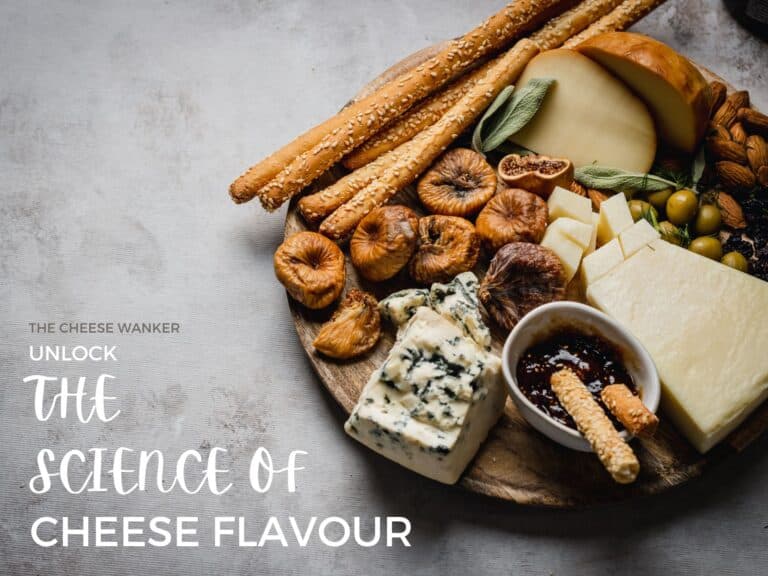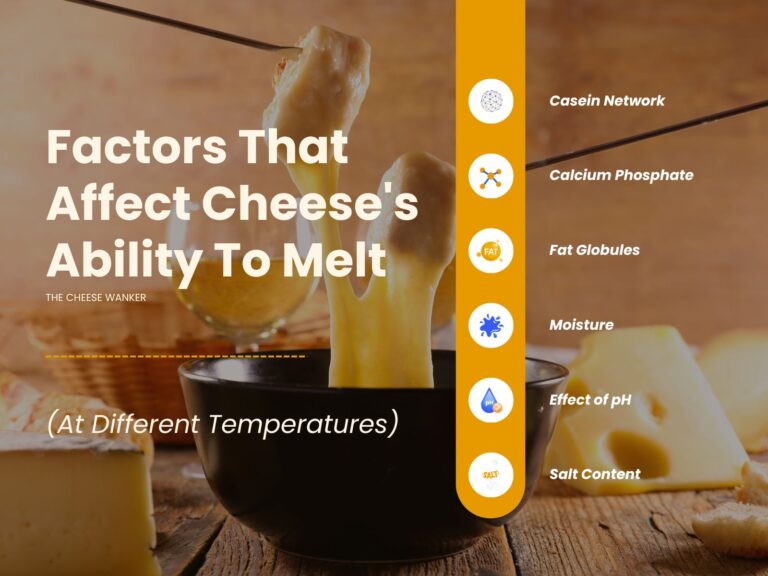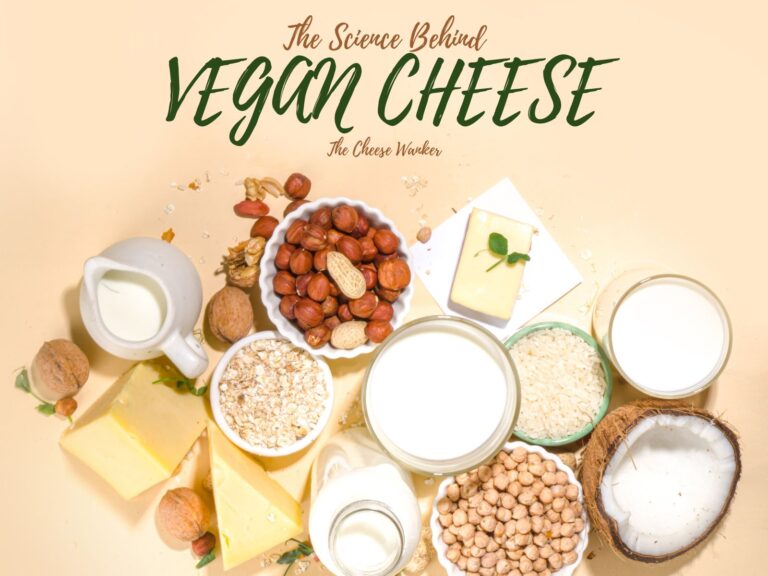Because we all eat with our eyes, the appearance of our food is key to the degustation experience. And of course, this extends to cheese. In this post, we will guide you through the 13 most colourful cheeses in the world. As you will see, we will cover the conventional (orange and grey) and the outrageous (black and blue!).
SEE MORE: The internet’s only correct list of the world’s most expensive cheeses →
What gives cheese its colour?
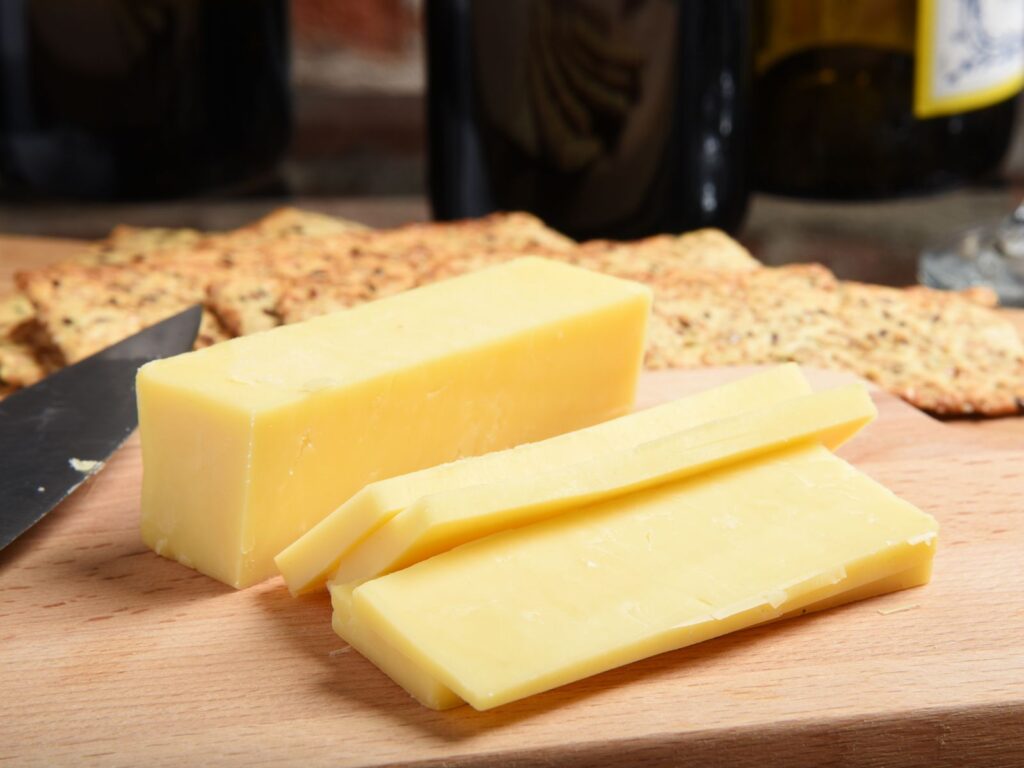
The colour most of us associate with cheese is yellow. But this is actually mostly the case with cow’s milk cheeses only. So, why does the colour of cow’s milk cheese range from pale yellow to deep yellow? As a matter of fact, the yellow colour comes from the molecular composition of cow’s milk. Cows absorb carotenoid compounds from their feed and deposit them into their milk.
And, the most common carotenoid is β-carotene which is bright yellow in colour. Moreover, β-carotene is fat soluble and ends up in the milk fat, which is retained and concentrated during cheese making.
How about goat’s milk cheese?
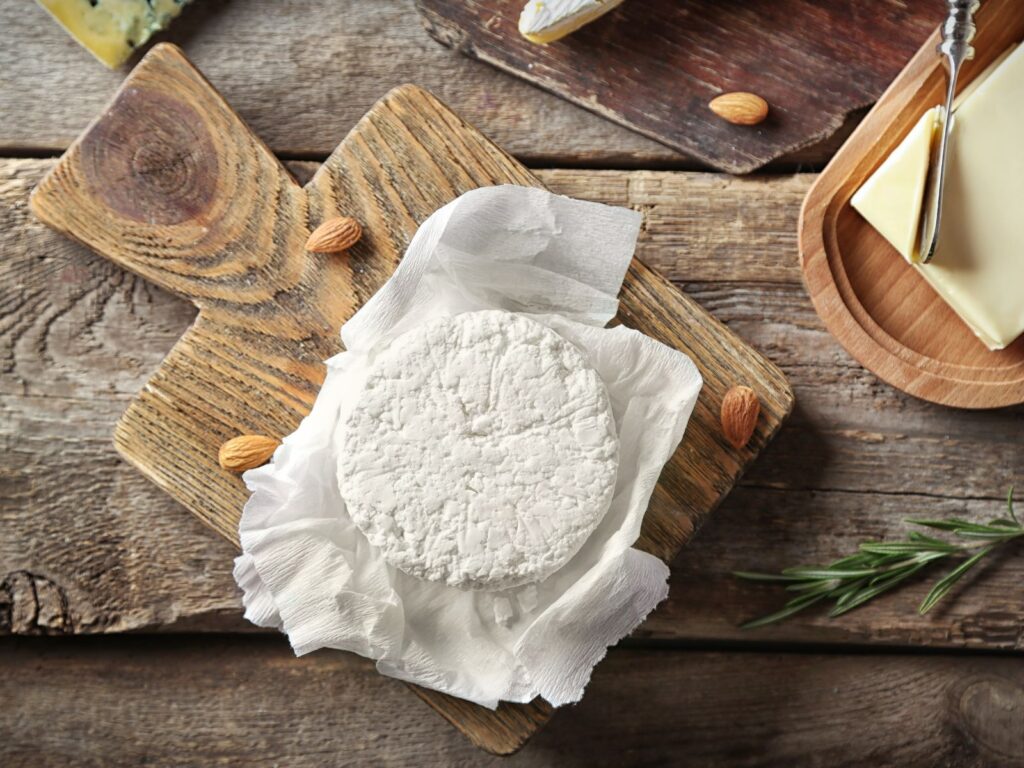
Goats convert the β-carotene from their diet into Vitamin A more efficiently than other dairy animals. Since Vitamin A is colourless, their milk does not have that yellow hue that most other milks used in cheesemaking have.
Instead, the casein protein and fats present in goat’s milk make it appear pristine white. And an expert cheesemaker will then pass on those qualities to their cheese. The result? A beautiful, clean white paste (inside of the cheese).
Natural dyes used in cheesemaking
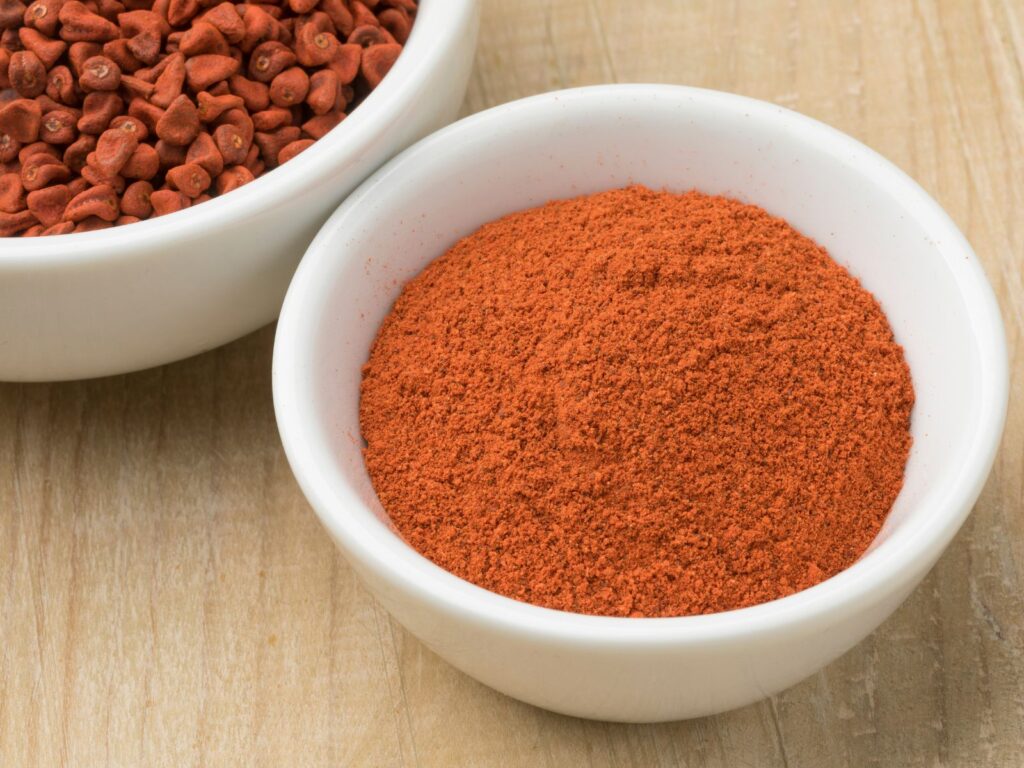
Throughout history, there are a number of natural dyes that have been used by cheesemakers to make their cheese stand out. As a matter of fact, this practice started in ancestral times when artisans would add a red pigment called annatto to make their cheese brighter.
The reason for this was because cheese made with high quality milk from grass-fed cows tends to be high in β-carotene. As a result, they usually have a brighter yellow hue than some of their lower quality counterparts. Overall, this practice would make mediocre cheeses look more like refined artisanal cheeses.
Nowadays, the use of annatto (and other natural dyes) is more for an aesthetic statement than a blatant trick. Without further ado, let’s have a look at our list of the most colourful cheeses in the world.
1. Mimolette
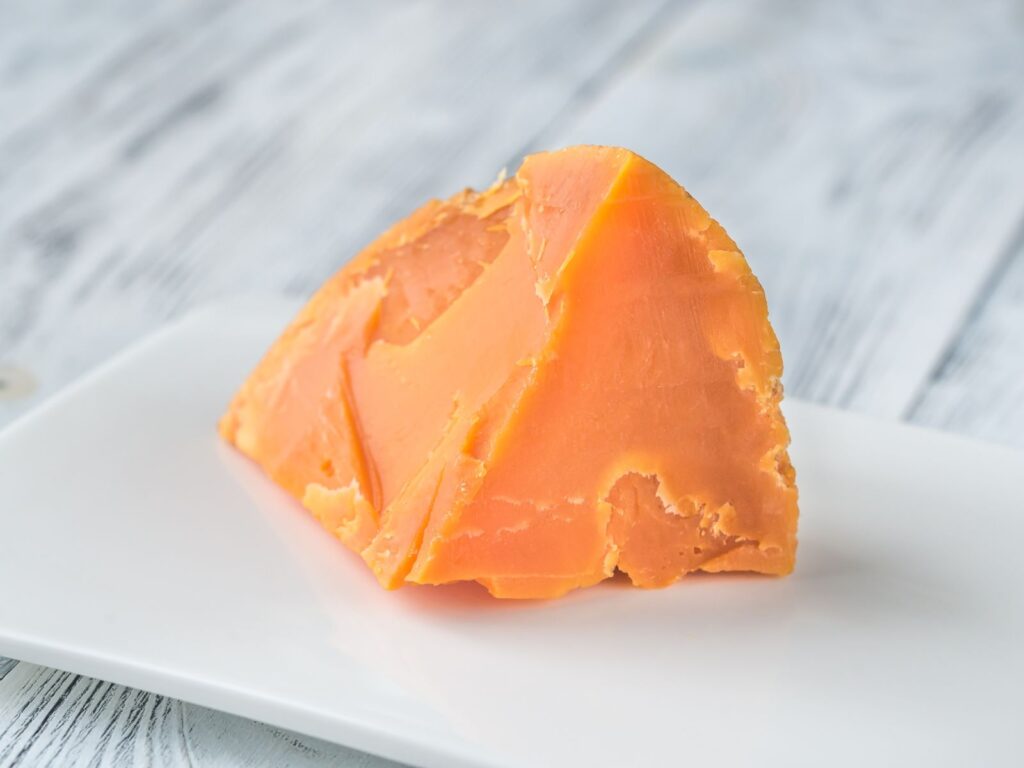
Mimolette is a brightly coloured pressed uncooked cheese from Lille, northern France. It draws its inspiration from the traditional Dutch recipe for Edam. However, it differs from its Dutch counterparts in the use of annatto to impart its trademark bright orange colour.
Whether annatto adds any flavour to cheese is a hotly debated topic amongst cheese lovers. Let’s first talk about the fruit and the seeds. On the nose, the achiote seeds have a slightly peppery aroma with a hint of nutmeg. If you were to eat it raw, you might notice a subtle nutty and sweet quality, with notes of pepper.
Having said all of this, by the time the seeds are dried, ground and added in small amount to cheese, the aroma and flavour impact is minimal.
You can read all about this iconic cheese from northern France in our post dedicated to Mimolette.
2. Soumaintrain
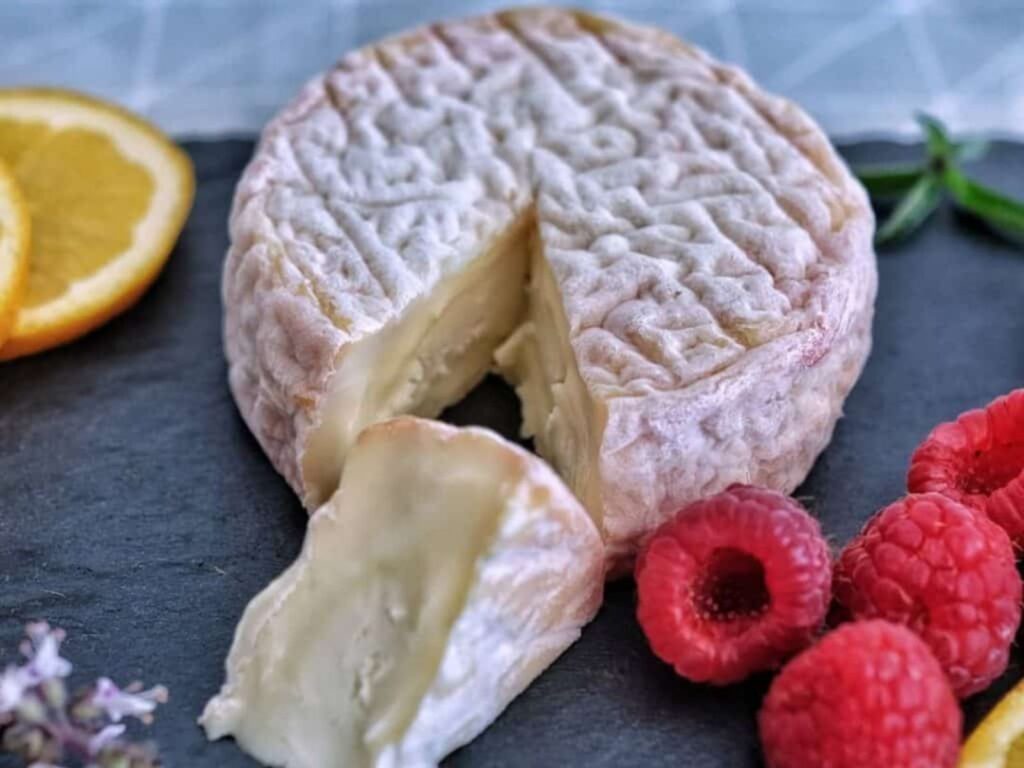
Soumaintrain is a soft washed rind cheese made in Bourgogne, France. During maturation, the cheesemakers wash each little wheel of Soumaintrain in a secret brine mixture. As a result, the bacterium Brevibacterium aurantiacum proliferates on the surface and imports a gorgeous pink hue to the wrinkly rind.
Unlike annatto in Mimolette, the pink colour in Soumaintrain is not the result of a natural dye. Since it is the work of tiny affineurs, there is actually an impact on the flavour of the cheese. Unlike other soft washed rind cheeses such as Epoisses and Maroilles, Soumaintrain is actually quite mild in aroma and flavour. Look out for those delicate floral notes in the aroma, and a subtle sweetness in the flavour.
3. Sage Derby
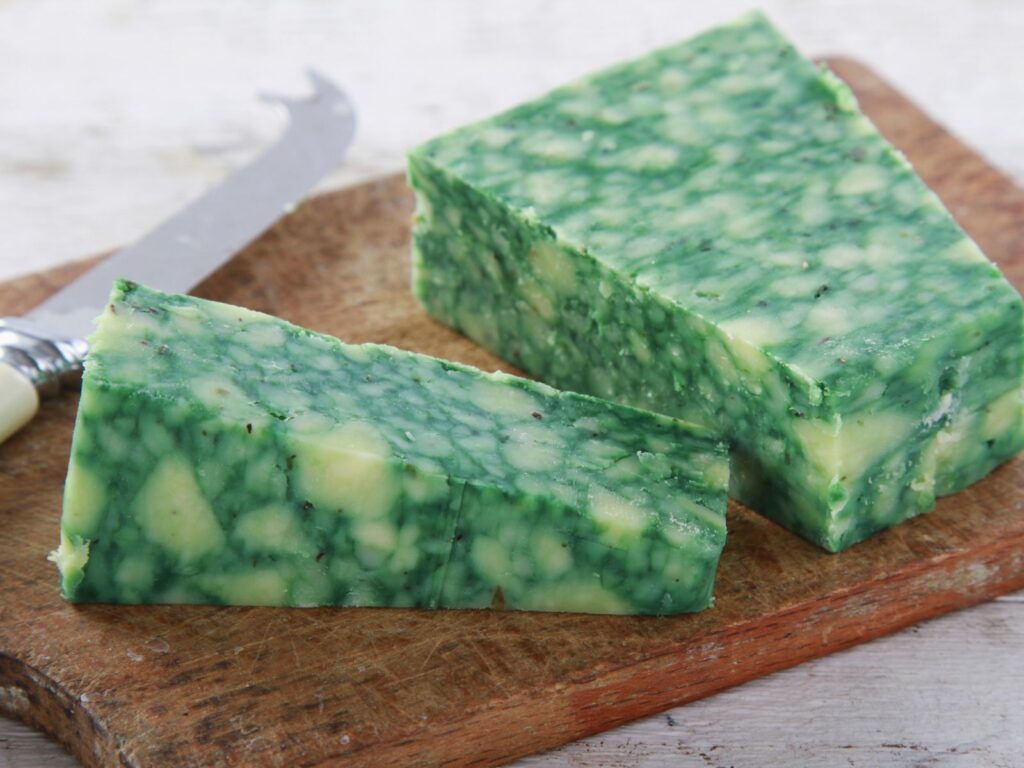
Our next cheese sees us back in the realm of natural dyes. Sage Derby is a mottled green cheese that finds its roots in Derbyshire, England. As the name indicates, it is a type of Derby cheese that is coloured with sage leaves and a mixture of parsley, spinach and marigold.
Due to the nature of the dye used, Sage Derby’s flavour is significantly different to that of an unflavoured Derby. Indeed, you will find herbal notes of sage in both the aroma and the flavour of this cheese.
4. Selles sur Cher
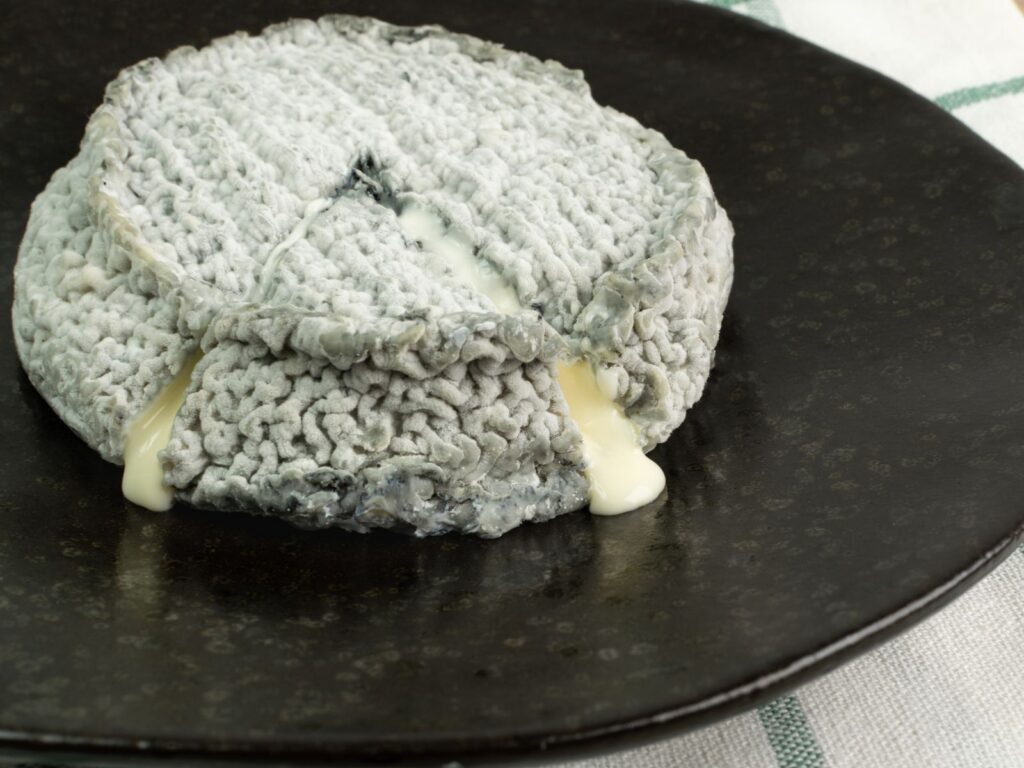
At number 4, we find another entry from France. After looking at orange, pink and green, you’d be forgiven for thinking that grey seems a bit drab. But just take one look at this cheese and I dare you to not be amazed! Selles sur Cher is a round, ash-coated soft white mould cheese that comes from the Loir-et-Cher region of France.
Historically, vegetable ash was used by cheesemakers to protect their cheese from flies and other insects. Presently, it is used more for an aesthetic reason. Once again, the ash does not play a big role in the flavour in the cheese.
5. Sottocenere al Tartufo
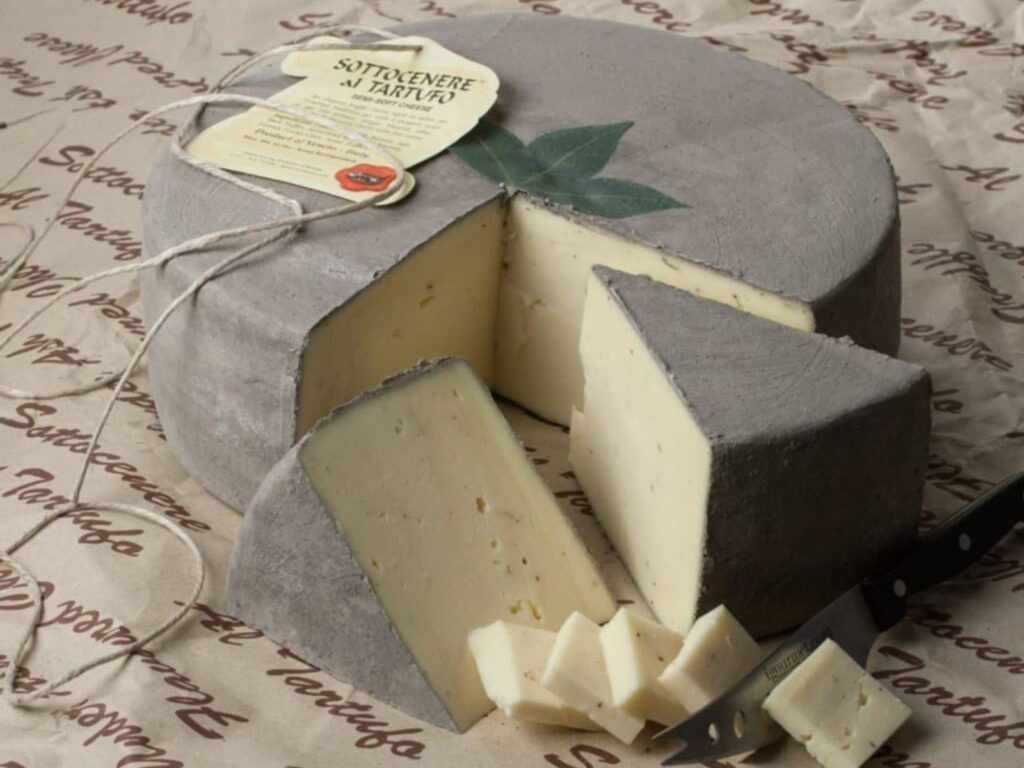
Another stunning example of what ash can do for the rind of a cheese is Sottocenere. This pressed cheese originates from Venice, Italy. It is made with pasteurised cow’s milk and truffle oil. The cheesemaker adds ash to its surface to speed up the rind growth. And this preserves its unique umami flavours during the maturation period that can last up to six months.
The end result is one of the most stunning rinds you will find on cheese made anywhere in the world. And the flavour is not too bad either.
6. Irish Porter Cheese
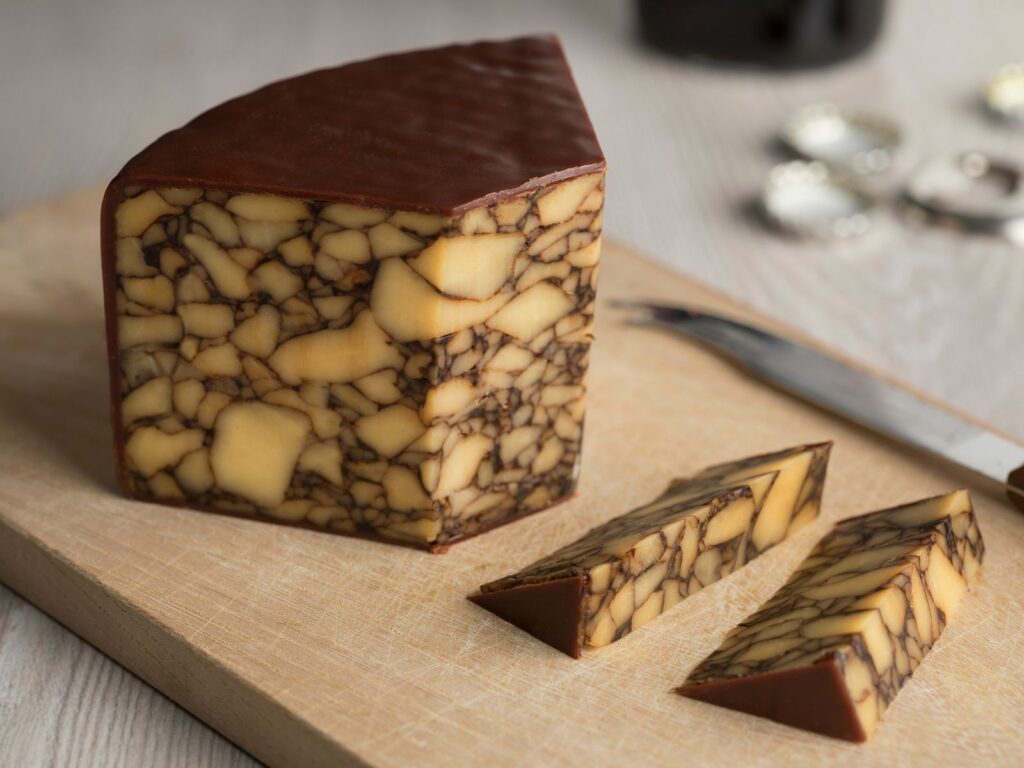
Let’s now embark onto the weird and wonderful world of boozy cheeses. As its name suggests, Irish Porter Cheese is a Cheddar that has been blended with Porter Beer made by Guinness Brewery. Because of this, the cheese’s paste presents with a gorgeous dark brown marbling.
As you would expect, the beer makes a significant flavour contribution in this cheese. Just like Porter Beer, Irish Porter Cheese displays rich chocolate flavours blended harmoniously with the grassy and savoury qualities in the original Cheddar.
7. Port Wine Derby
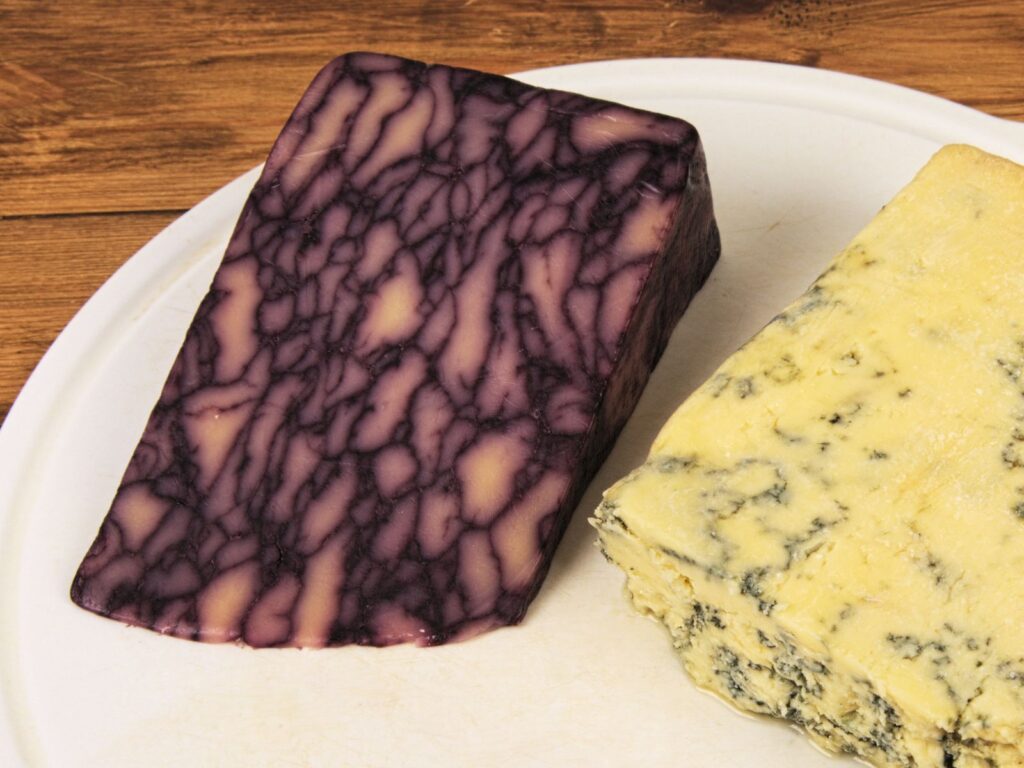
At number 7, we find the second coloured Derby (and second boozy cheese) on our list. Port Wine Derby is a creamy variant of Derby that has been infused with Port Wine. As you can see, the wine creates a stunning purple marbling throughout the paste of the cheese.
Undoubtedly, this is a case where the colouring agent influences the flavour of the cheese. Look out for playful notes of blackcurrant and grape in this pressed English cheese.
8. Lavender Gouda
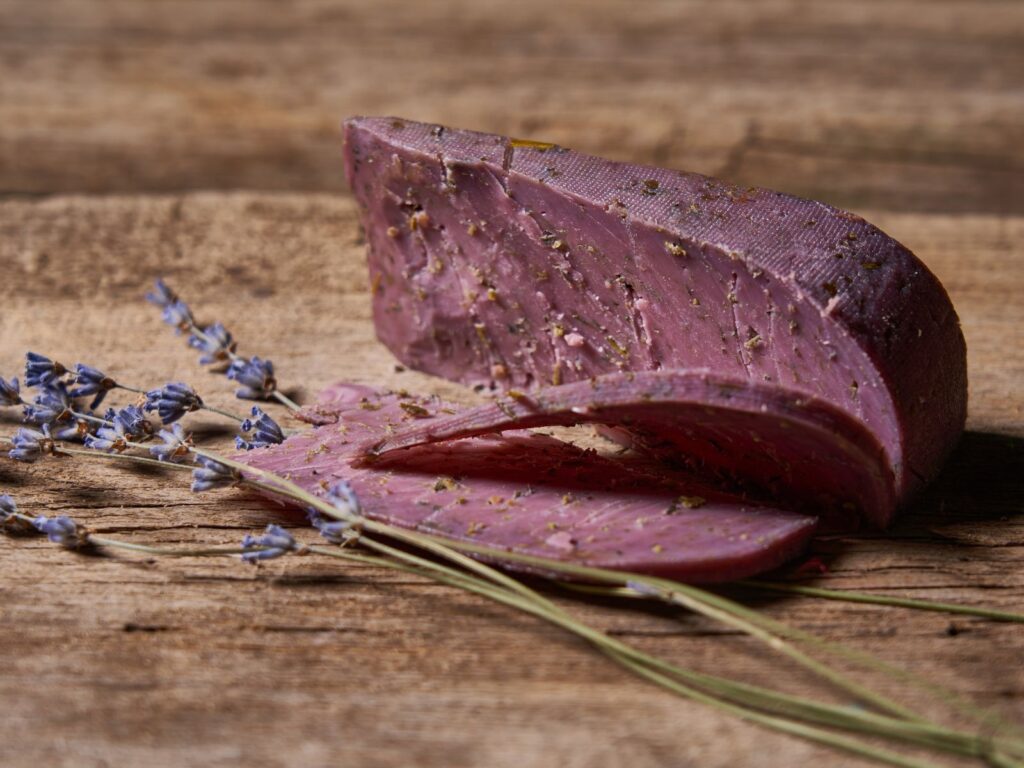
It’s now time to get to the downright outrageous. And what better cheese to start with than this stunning Lavender Gouda. As you’ve probably guessed, this Dutch cheese gets its deep purple colour from the lavender flower. Lavender belongs to the mint family and is very popular in northern Africa, Europe and southwest Asia.
As was the case with annatto and ash, lavender does not make much of a contribution to the flavour of the cheese. Throughout the Netherlands, you can find both cow’s and goat’s milk Goudas that are coloured with lavender. And they are often flavoured with other herbs such as rosemary and thyme.
9. Blue Pesto Gouda
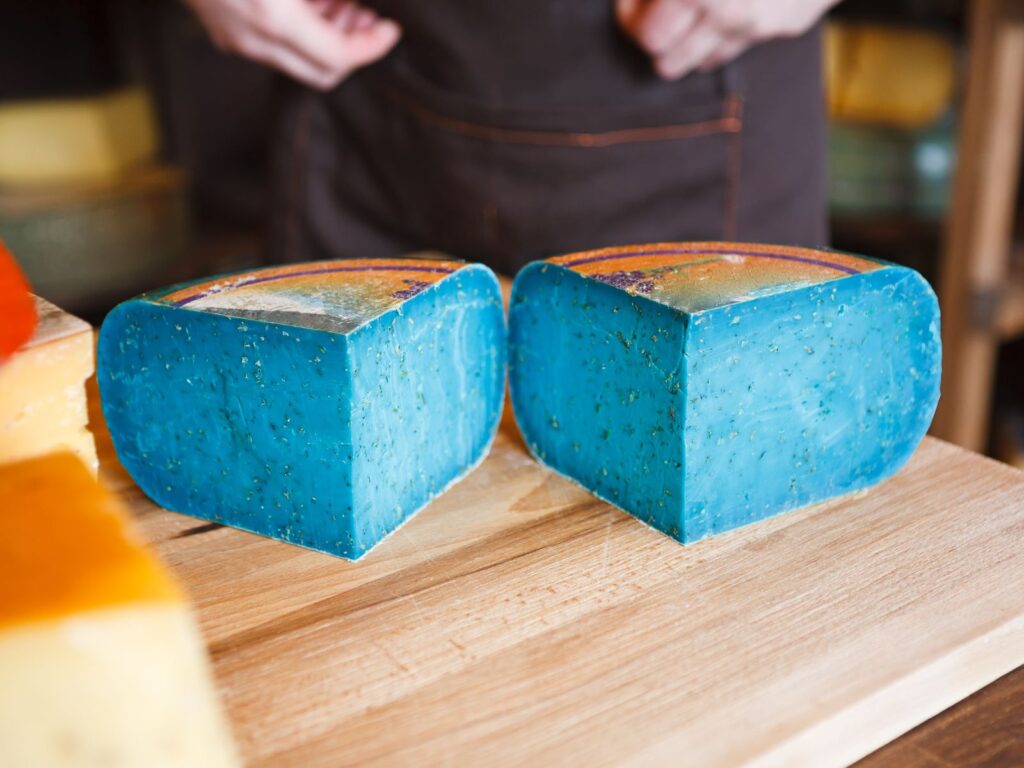
Am I the only one who thinks that this cheese belongs in the hands of Papa Smurf? This extravagantly blue pressed cheese also comes from the Netherlands and is made using a traditional recipe for Gouda. It gets its bright colour from lavender but is flavoured with pesto.
Just like the Lavender Gouda above, the flower does not impact the cheese’s flavour. But the pesto certainly does. Look out for hints of nuttiness and spice.
10. Red Pesto Gouda
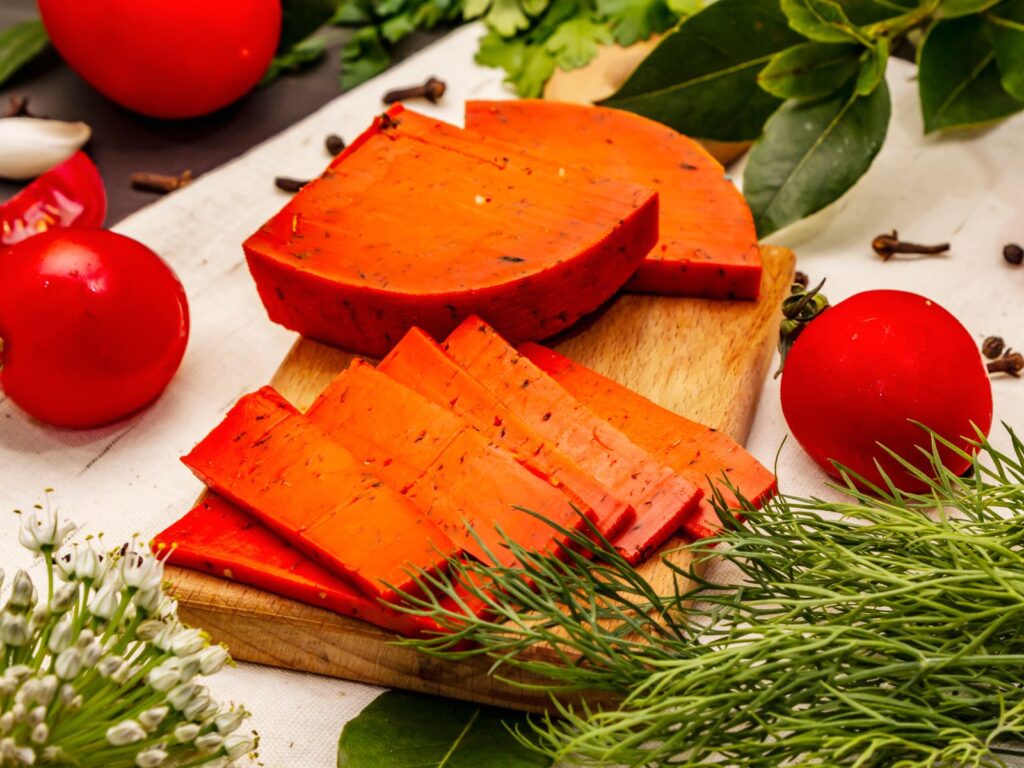
Without a doubt, red is a colour more commonly associated with pesto than blue. And this Red Pesto Gouda is coloured (and flavoured) with basil, tomato, chilli, pine nuts, Parmesan and olive oil. As you can imagine, this bright red pressed cheese tastes very different to a regular Gouda.
Overall, its flavour is quite similar to the Blue Pesto Gouda we talked about just before. But since so many of us eat with our eyes, the gustatory experience will be different with each cheese.
11. Ruscello Black Lemon
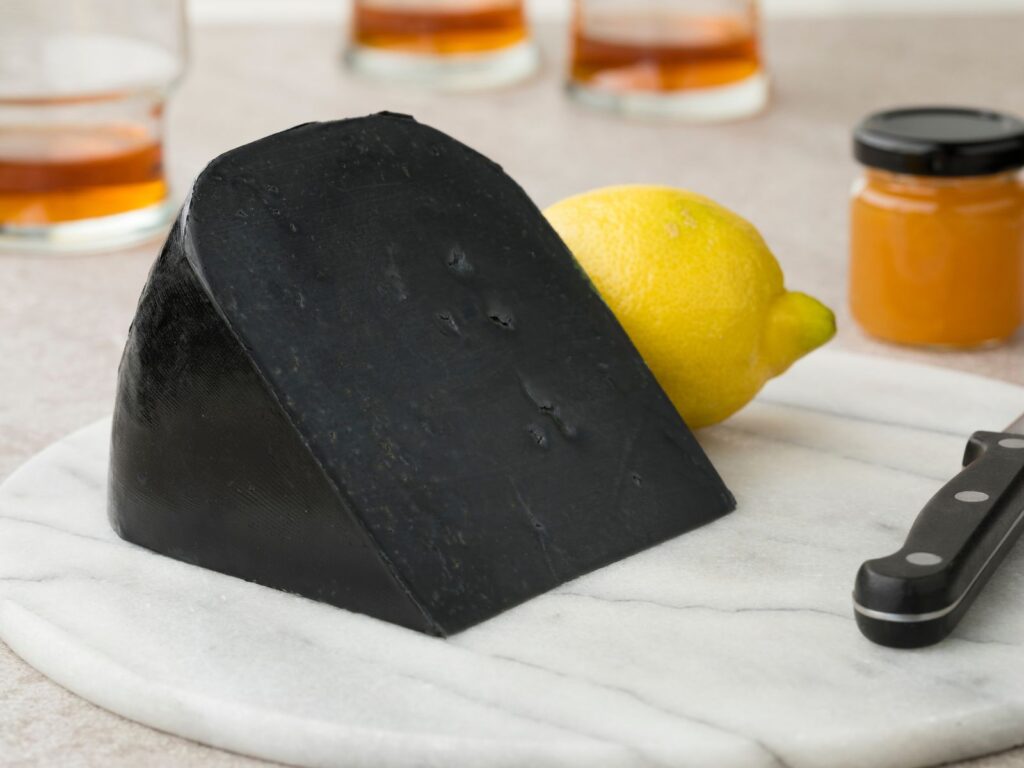
Are you detecting a theme with Dutch cheeses? Black Lemon is the first of two Ruscello cheeses to appear on our list. Ruscello is a cheesemaker based in Veenendaal, Netherlands. And their specialty is flavoured (and coloured) cheese.
With its stark black paste, Black Lemon is about as eye-catching as it gets on a cheese platter. The cheese gets its black colour from activated charcoal. But this does not have an effect on its flavour. As its name indicates, this Gouda is flavoured with lemon.
12. Ruscello Life
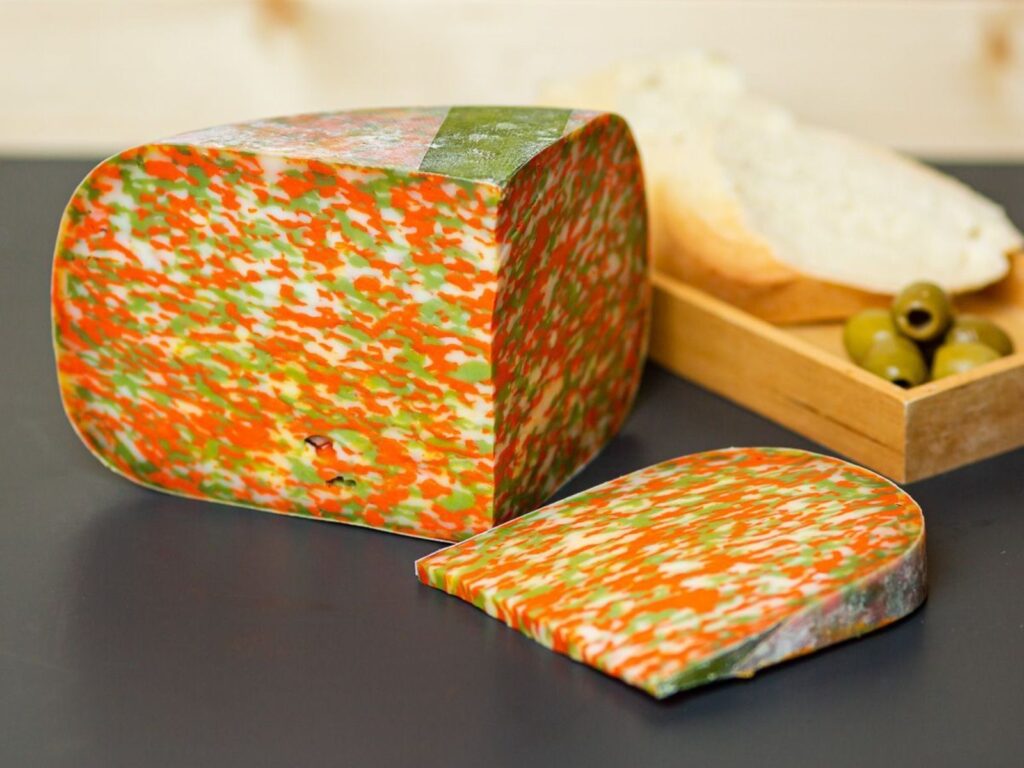
From black, we go to red, white and green. Ruscello Life is a mixed cow and goat milk Gouda that has a gorgeous spattering of red and green through its paste. Ruscello Cheese use a mixture of red pesto, green pesto and green chilli to colour and flavour this remarkable cheese.
And just like the Pesto Gouda’s, you will be able to taste the colour in this cheese! Overall, you can expect savoury, nutty and spicy accents.
13. L’Immanente
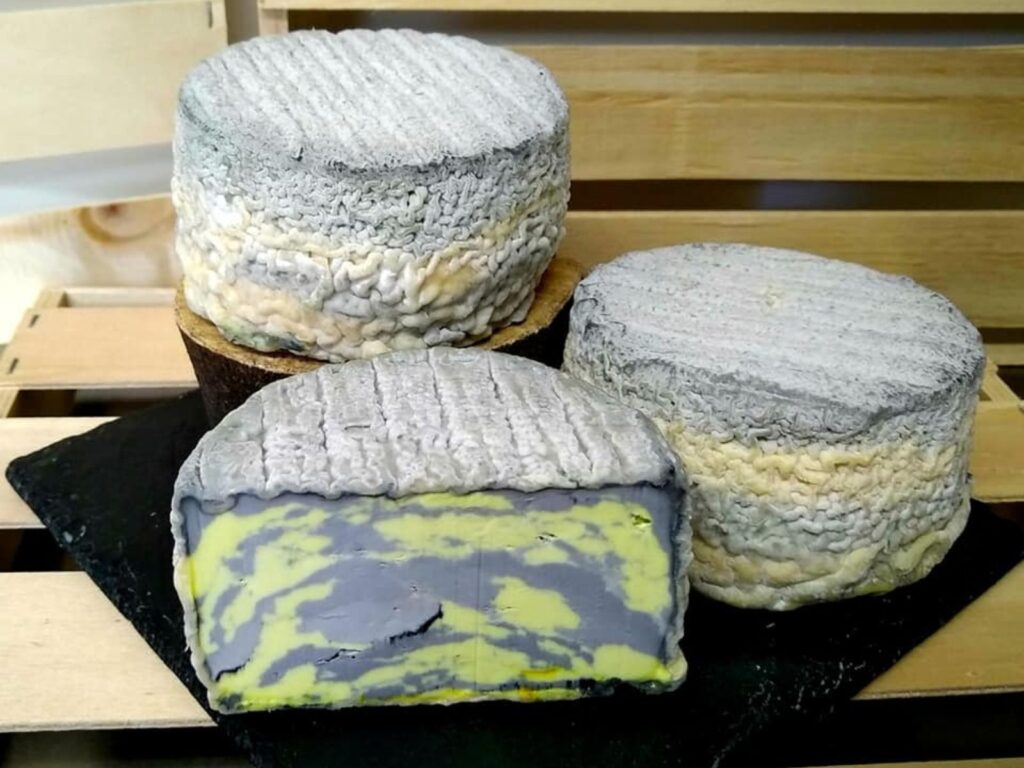
I think you can safely say that we’ve left the best for last with this glorious coloured Tomme made by Le Bois d’Amalthée in the southwest of France. With its yellow and grey swirls, L’Immanente is a work of art that will take any cheese platter to the next level.
The paste’s colour comes from a mixture of activated charcoal and turmeric (curcuma). And all of this painted on a pristine white canvas created by the goat’s milk. Unsurprisingly, the flavour of L’Immanente shows a subtle (and not unpleasant) bitterness with a touch of spice.
The world’s most colourful cheeses
Thank you for reading our post on the most colourful cheeses from around the world. As you can see, cheesemakers can achieve some truly outrageous and artistic colours in their cheese using exclusively natural dyes. In some cases, the dye is only for aesthetic reasons. While in others, it plays a role in the aroma and flavour of the cheese.
Did we leave out your favourite coloured cheese? Let me know in the comments below.
